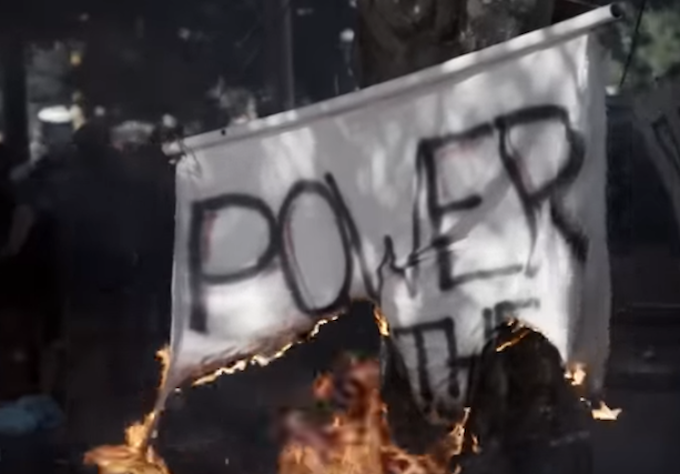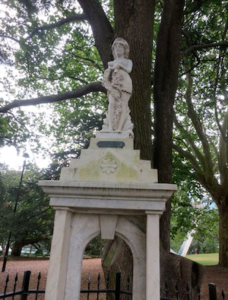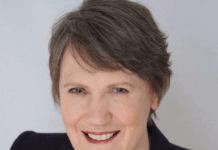
ANALYSIS: By Gavin Ellis, publisher of Knightly Views
Every journalist that “outs” a conspiracy theorist or extremist paints a target on their own back.
The anti-truth brigade thrives in dark places and shining a light on it and its associates is doing a public service. Yet it comes at a cost.
The tone of abuse that it generates is even darker than the places from which it emanates. New Zealand journalists — particularly female journalists — are being subjected to taunts and threats on an unprecedented scale and in forms that are deeply disturbing.
- READ MORE: A NZ media conundrum over how to cover the ‘dangerous’ conspiracists
- Other conspiracy theorist reports
Paula Penfold of the Stuff Circuit team that produced the documentary Fire and Fury, which unmasked many of those behind the February-March protest in Parliament grounds, revealed in the Sunday Star Times last weekend that since its appearance she has been targeted with death threats, abuse “and, unsurprisingly, conspiracy theories”.
She told the newspaper: “I’ve had lots before but never as many or as ugly or as threatening than after this documentary.”
Penfold’s situation was outlined in an article about the abuse three female Stuff journalists had endured for doing their jobs. Alongside Penfold were Kirsty Johnston, who revealed MP Sam Uffindell’s record at King’s College, and Andrea Vance, currently revealing the anti- brigade’s associations with local body candidates.
“You can’t fight crazy,” Vance told the SST. “It’s exhausting. Half their tactics are to tie you up in pointless circular arguments but if people honestly think we’re being paid by the government they’re not well.”
Attitude about media
Her latter point was a reference to an all-too-popular suggestion that the media en masse had been suborned by the Public Interest Journalism Fund. Anyone who thinks New Zealand’s media can be instantly brought to heel by $55 million spread among all of them over a period of four years is, indeed, not well.
Then again, the attitude toward journalists is “not well” either.
I felt immensely saddened to see this quote from Kirsty Johnston about the spread of trolling and abuse: “All reporters know it. They go to parties and don’t say what they do.”
When I was young, the only people who had that attitude were undertakers and the people who worked in the local VD clinic. We were proud to say we were journalists, reporters, photographers, sub-editors and so on.
Our broadcasting colleagues were equally open about their profession.
What went wrong, and when?
Fire and Fury – the documentary. Video: Stuff Circuit
It has been a long time since the public put journalists on a pedestal. Correct me if I’m wrong, but I believe the last statue to a journalist in Auckland was erected in 1901 (remembering George M Reed and still standing in Albert Park).
Slow decline
There was a slow decline over the years but in the 40 years I spent in daily journalism I never felt despised. Yes, I received two death threats in that time but the first was written in crayon and the second wasn’t aimed only at me, or even only at journalists (which was why it was reported to the police). What journalists are now experiencing is either something new or something old harnessed to something new.

I think it may well be the latter. The old component is anarchy and the new is digital communication. Together they are dynamite (excuse the pun).
Anarchy is basically the repudiation of existing systems of government and ordered society, represented by institutions such as Parliament and the media (the latter is seen as the mouthpiece of politicians). In the past it had a capital A and was an intellectual breeding grounds for socialism, communism, and other then-radical politics.
However, even then, it had its hangers-on who were drawn to its sometimes-violent rhetoric with little understanding or interest in its philosophy. The crazy bombers and assassins were seldom actually card-carrying members of an anarchist body.
Today, anarchy has a small a. We use the term to denote disorder and disarray. And it underlies much of the anti-this and anti-that ranting that permeates social media.
Put simply, there are people out there who want to see the institutions of civil society brought down. They have no clear idea what should replace it and they don’t care. In a way, they are calling for destruction for its own sake. That is at the core of conspiracy theories.
Social media has become the new explosive. Much easier to come by than volatile nitro-glycerine or the “safer” dynamite, it can carry a destructive force over a far greater distance.
Digital bomb-throwers
The digital bomb-throwers use it in two ways. The first is by undermining truth, which casts doubt over the legitimacy of institutions. The second is by discrediting those who represent those institutions. They reserve special attention, however, for those who would presume to unmask, undermine and discredit them.
So, it came as no surprise that the verbal attacks on journalists rose to a new pitch after the appearance of Fire and Fury on the Stuff website and the series of revelations about local body candidates’ undisclosed affiliations with groups that spread conspiracy theories.
The crescendo of hate requires fortitude on the part of the journalists exposing conspiracy theorists and other bad agents. They can take some comfort from the fact that media organisations take seriously their duty of care toward staff — and freelancers — facing threats.
RNZ chief executive Paul Thompson told me the abuse was taking its toll.
“We have responded with improved security and health and safety planning, at our offices and in the field. We also have set up improved process for dealing with inappropriate and abusive feedback and social media. There are things we can do to mitigate the effects of the abuse but we cannot reduce the impact or risk to zero.”
Television New Zealand’s head of news, Phil O’Sullivan, is similarly conscious of the risks and effects.
“TVNZ has not made any changes to security arrangements due to recent incidents. But we have many existing safety precautions for reporters in place. Depending on the story, this can include traveling with extra security when covering certain events, reporting from safe locations and from a distance if a situation feels volatile and using technology solutions – for example drone footage, or footage recorded on mobile phones rather than a camera set up where needed.
“We have a responsibility to report on all the stories impacting New Zealanders — but ultimately, we need to do that in a safe way. At the forefront of this is the wellbeing and safety of our people and we have a number of measures in place to support this.”
Probing anti-fact organisations
He makes an important point: Media organisations must not let these diatribes and threats stay their hands. Investigation into anti-fact and extremist organisations and individuals must continue and are no more important than during election periods, be they local or national.
There is, however, a caveat. Journalists who call out conspiracy theorists and latter-day anarchists also have a duty of care. They have a duty to ensure they have the facts and that what they say is fair.
Last Saturday, the Wairarapa Times-Age investigated “local government candidates with controversial links” under the heading “Who is pulling the strings?” It “outed” a mayoral candidate, Tina Nixon, saying she “had been promoted by conspiracy website Resistance.Kiwi” and on Facebook had followed people associated with far-right groups.
Its source was FACT Aotearoa, a group that exposes conspiracy theorists.
However, the newspaper did not make direct contact with Nixon (it left an email saying she had two hours to respond but she did not see it within the required timeframe). Her only link with Resistance.Kiwi had been in giving them permission — along with several other websites — to reprint her submission on the 3 Waters proposals.
Like many of us, she follows hundreds of websites and social media users but does not support what many of them say. FACT Aotearoa offered Nixon an apology, saying there appeared to be a “miscommunication” with the Wairarapa Times-Age. In my view, the newspaper failed her and electors by not substantiating information.
There is potential here for witch-hunting or, as my former colleague Fran O’Sullivan put it on social media when calling out the mistake, McCarthyism.
In addition to fact-checking, media should give their targets an opportunity to explain their position before a decision is made to publish or broadcast. Tina Nixon is an object lesson.
There is a further reason why media must take great care in “outing” conspiracy theorists and extremists. Get one wrong and it might be seen as an unfortunate error. Get more wrong and the conspiracy theorists and extremists will say gleefully (and, irritatingly, with a very small amount of justification) that the media can’t be believed.
Dr Gavin Ellis holds a PhD in political studies. He is a media consultant and researcher. A former editor-in-chief of The New Zealand Herald, he has a background in journalism and communications — covering both editorial and management roles — that spans more than half a century. Dr Ellis publishes a website called Knightly Views where this commentary was first published and it is republished by Asia Pacific Report with permission.














































